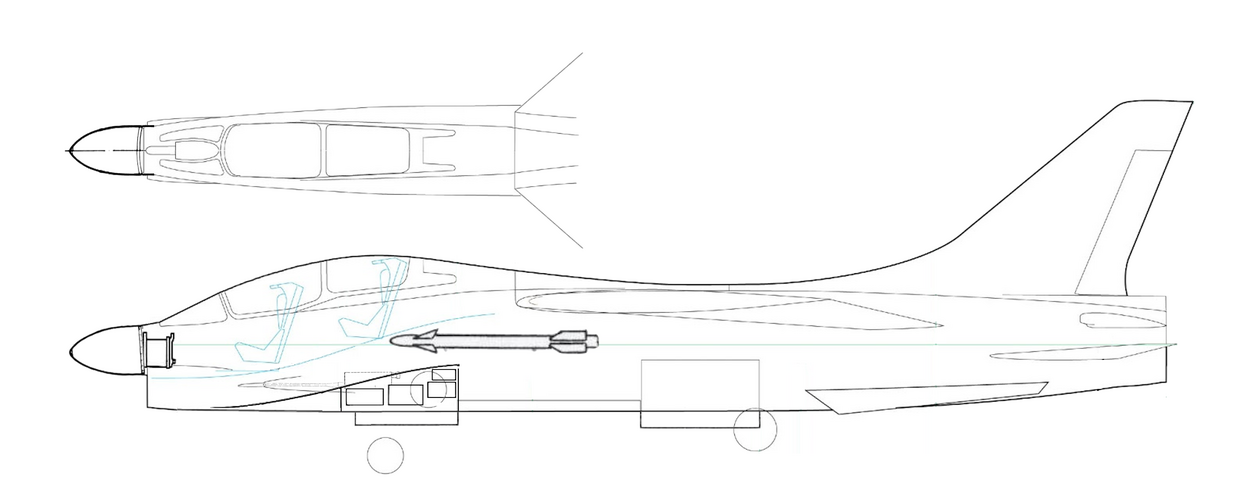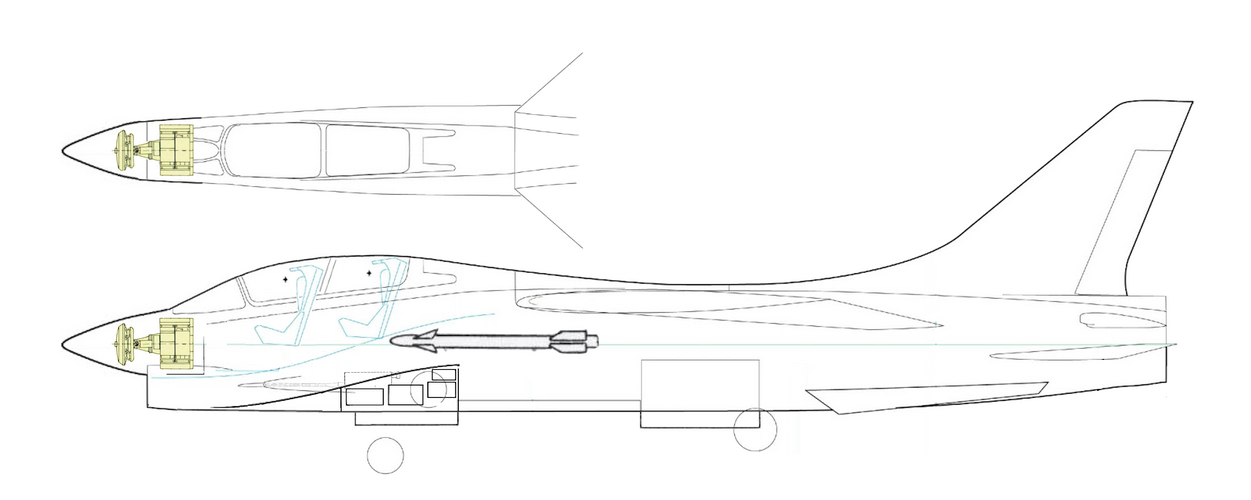Which brings me back to my earlier comment that the Spey Twosader is putting lipstck on a pig, getting a superseeded fighter in order to keep substandard carriers in service. Instead the RN saw the emerging threat and decided to buy the worlds best fighter and put it on the biggest carriers it could; Eagle, Ark Royal, CVA01 & 02. This great plan was thwarted by short sighted politicians who spent the same money on less capability.
Another thing about the Spey Twosader is the schedule. The last new-build Crusaders were the French F8E-FN built in 1964, the same year as the Spey first ran. When would the Spey Twosader be built, 1966-67, 2-3 years after the final production of the fighter that was in service for a decade at this point and well and truly surpassed?
Your schedule is not correct.
Let me remind you of the actual timeline of events...
The first flight took place on February 6, 1962. On September 18, 1962, the F8U-1T was redesignated TF-8A under the new Tri-Service designation system.
Although developed under a Navy contract, the two-seat Crusader was not ordered into production because of a cutback in the fiscal 1964 budget.
After being evaluated by the Navy in the USA, the TF-8A underwent a European tour in the hopes of attracting customers. For a while, the British were interested in the two-seat Crusader. If ordered, the British Crusader would have been powered with the Rolls-Royce Spey engine. However, the British decided instead to order the McDonnell F-4 Phantom, and the idea of a Spey-powered Crusader never achieved fruition.
On July 1, 1964, the Royal Navy gave the official go-ahead for a version of the Phantom to fulfill its needs.
This looks like the TF-8A made its visit to the UK in 1963, with provisional/preliminary discussions seeing Short selected to be the UK production partner IF the Spey Twosader is chosen.
So the decision for the Spey Twosader instead of the Phantom would be the same - mid-1964 (or earlier). I can see no possibility that would result in a F-8(RN) decision that would take the extra 2-3 years you suggest - instead I see, if the decision against CVA-01 had already been made, a likely earlier (mid-1963?) decision date.
While the last US F-8E was delivered mid-summer 1964, the first production F-8E(FN) for the French Navy first flew on 26 June 1964, and
the last was delivered to France on 1 March 1965.
Therefore, the RN ordering the F-8(RN) would see Vought and the UK setting up a production line in the UK in 1963-64, to allow Vought to concentrate on A-7 production (Short had already been suggested for the role historically). Vought could easily fit in a couple of prototype and a couple of developmental aircraft while finishing off the US and French orders in 1964. Considering the extra decks available* some 150 or so would be planned for production.
In any case, considering that the modifications to the TF-8A would be no more, and likely less than, those for the F-4K - entry into production should take no more than 2 years, more likely 18 months or so. Also note that many of the changes to the F-8 (the second seat in the cockpit especially) were already done, so much less time would be used up in getting the developmental F-8(RN)s flying than was used in the "start from nothing" state of the F-4K modifications (which only took 2 years to see developmental models flying).
We could see production F-8(RN)s being delivered to the RN in late 1965 or early 1966 (compared to April 1968 for the FG.mk1/F-4K), with 4 flight decks available (3 until first Hermes then Ark are overhauled).
* Eagle would require no modifications for the F-8(RN) other than to her aircraft test & repair equipment, and neither would Victorious. Hermes would be fitted for them during her Feb 1964 - May 1966 modernization, and Ark Royal would not only be able to operate them from the start, but the aircraft-related modifications needed would be less, so her 1967-1970 (1969?) modernization could focus more on her propulsion plant and other issues that historically were not properly addressed.
Since Victorious would need to be retired no later than 1978, Eagle no later than 1984, Hermes 1986, and Ark 1988 or so, building of new carriers would only be a pressing issue in the early 1970s (for delivery in the mid-late 1980s) - and those could well be "Harrier-carriers" sized more like Hermes than the historic Illustrious class.





